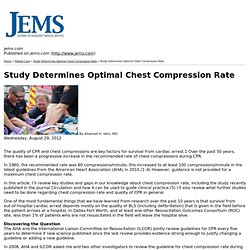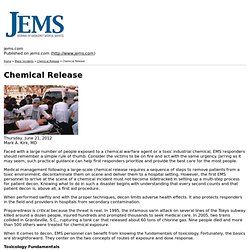

CHIA_low_res. Drugs_of_abuse_2011. Untitled. Start. A. Learning Object Assets. Cellinjury. The Drug That Never Lets Go. Photo By @FatTonyBMX Dickie Sanders was not naturally prone to depression.

The 21-year-old BMX rider was known for being sweet spirited and warm -- a hugger not a hand-shaker. The kind of guy who called on holidays. Who helped his father on the family farm. Who spent countless hours perfecting complicated tricks on his bike. Yet on Nov. 12, 2010, Sanders was found dead on the floor of his childhood bedroom. PBS NewsHour Science Support Provided By The National Science Foundation, the Howard Hughes Medical Institute, the Gordon and Betty Moore Foundation and the S.D.
The suicide was the culmination of five days of strange behavior that began shortly after Sanders snorted a powdery substance he bought from a friend. “I don't like the way this is making me feel," Sanders told his stepmother, Julie, as the two awaited his release from the hospital. An autopsy revealed a powerful stimulant in his system: methylenedioxypyrovalerone, also known as MDPV. ‘Any Call Has the Potential to Become Violent’ - Printable Version - Jems.com. Friday, February 24, 2012 Gailynne M.

Ferguson Over the years, the EMS and law enforcement industries have seen changes ranging from their ballistic protection and equipment to training and response procedures. Unfortunately increases in violence, mental instability, drugs, gangs, lack of attention and desperation have forced people in both occupations into combat situations. The result has been more high-risk tactical incidents for law enforcement that ultimately involve EMS.
Increased attacks on both professions have resulted in injury and death to responders. Fairfax County (Va.) Effective Communication Between Providers & Physicians Improves Patient Hand-offs - Printable Version - Jems.com. Thursday, April 12, 2012 George J.

Koenig Jr., DO, MS Samuel M. Galvagno Jr., DO, Maj, USAFR, MC, FS The “hand-off”—or transfer of patient care from prehospital providers to emergency department (ED) physicians, trauma surgeons or critical care physicians—represents one of the most important elements of successful care for patients with serious injuries or illnesses. Developing the means to transfer information with effective communication skills can’t be underemphasized in EMS. Understanding Doctors & Nurses In critical care settings, communication loads can be extremely high, complex and cognitively taxing. Although much of the present literature has been devoted to physician-to-patient and physician-to-physician communication, the principles gained from this research are applicable in EMS.
Importance of Hand-offs Communication deficiencies exist at all levels, and miscommunication has the potential to result in errors that could compromise patient safety. Study Determines Optimal Chest Compression Rate - Printable Version - Jems.com. Wednesday, August 29, 2012 The quality of CPR and chest compressions are key factors for survival from cardiac arrest.1 Over the past 50 years, there has been a progressive increase in the recommended rate of chest compressions during CPR.

In 1960, the recommended rate was 60 compressions/minute; this increased to at least 100 compressions/minute in the latest guidelines from the American Heart Association (AHA) in 2010.(1–4) However, guidance is not provided for a maximum chest compression rate. In this article, I’ll review key studies and gaps in our knowledge about chest compression rate, including the study recently published in the journal Circulation and how it can be used to guide clinical practice.(5) I’ll also review what further studies need to be done regarding chest compression rate and quality of CPR in general. I began the review of chest compression rates by searching for appropriate articles in such databases as PubMed and repeated it several times until November 2009. Chemical Release - Printable Version - Jems.com. Thursday, June 21, 2012 Mark A.

Kirk, MD Faced with a large number of people exposed to a chemical warfare agent or a toxic industrial chemical, EMS responders should remember a simple rule of thumb: Consider the victims to be on fire and act with the same urgency. Jarring as it may seem, such practical guidance can help first responders prioritize and provide the best care for the most people. Medical management following a large-scale chemical release requires a sequence of steps to remove patients from a toxic environment, decontaminate them on scene and deliver them to a hospital setting. However, the first EMS personnel to arrive at the scene of a chemical incident must not become sidetracked in setting up a multi-step process for patient decon. When performed swiftly and with the proper techniques, decon limits adverse health effects. Preparedness is critical because the threat is real.
When it comes to decon, EMS personnel can benefit from knowing the fundamentals of toxicology. How to Protect EMS Patients through Better Research & Understanding - Printable Version - Jems.com. Wednesday, July 25, 2012 For the past four decades, the evolving medical discipline of EMS has had its demonstrated successes in many communities worldwide.1–7 Not only has there been a documented lifesaving effect, but many EMS therapies also have been used to diminish morbidity and discomfort for our patients through earlier intervention.8–10.
